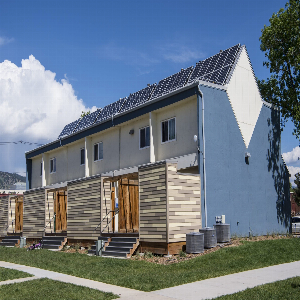IMARC Group, a leading market research company, has recently releases report titled “Residential Energy Storage System Market: Global Industry Trends, Share, Size, Growth, Opportunity and Forecast 2023-2028.” The study provides a detailed analysis of the industry, including the global residential energy storage system market size, growth, share, trends, and forecasts. The report also includes competitor and regional analysis and highlights the latest advancements in the market.
Industry Overview of Residential Energy Storage System Market
A Residential Energy Storage System (ESS) is a cutting-edge technology designed to store and manage energy within a residential setting. It comprises advanced battery storage systems that enable homeowners to store surplus energy generated from renewable sources like solar panels or wind turbines. It is safe, flexible, easy to install, reduces the dependence on the grid system, and provides maximized self-supply of solar. It enhances energy self-sufficiency, increases energy efficiency, and reduces reliance on the traditional power grid. It offers greater energy security and flexibility, which makes them a promising solution in the transition toward a greener and more sustainable future.
How Big Is the Residential Energy Storage System Market?
The global residential energy storage system market size reached US$ 847.5 Million in 2022. Looking forward, IMARC Group expects the market to reach US$ 2,846.86 Million by 2028, exhibiting a growth rate (CAGR) of 21.93% during 2023-2028.
Global Residential Energy Storage System Market Trends and Drivers:
The surging consumption of electricity worldwide represents one of the primary factors driving the need for ESS in residential areas to minimize the instances of power failures. Moreover, the rising use of REES as a reliable source of power during emergencies, especially in areas prone to natural disasters, including hurricanes or wildfires, is contributing to the market growth. Besides this, there is an increase in the integration of smart home systems in REES that allows homeowners to control and monitor their energy usage more efficiently. Along with this, the growing adoption of smart homes on account of rapid urbanization, improving lifestyles, and inflating income levels is influencing the market positively.
What Is Included In Market Segmentation?
The report has segmented the market into the following categories:
Technology Type Insights:
- Lithium-ion Batteries
- Lead-acid Batteries
- Others
Power Rating Insights:
- 3-6 Kw
- 6-10 Kw
- More Than 10 Kw
Ownership Type Insights:
- Customer-owned
- Utility-owned
- Third-Party Owned
Connectivity Type Insights:
- On-Grid
- Off-Grid
Regional Insights:
- North America
- United States
- Canada
- Asia Pacific
- China
- Japan
- India
- South Korea
- Australia
- Indonesia
- Others
- Europe
- Germany
- France
- United Kingdom
- Italy
- Spain
- Russia
- Others
- Latin America
- Brazil
- Mexico
- Others
- Middle East and Africa
The report provides a comprehensive analysis of the industry key players listed below:
The Major Players in the market are ABB Ltd., BYD Company Limited, Delta Electronics Inc., Eaton Corporation plc, Eguana Technologies Inc, Enphase Energy Inc, Huawei Technologies Co. Ltd., LG Energy Solution Ltd, Panasonic Corporation, Samsung SDI Co. Ltd, Schneider Electric SE, SENEC (EnBW Energie Baden-Württemberg AG), Sonnen GmbH, Tesla Inc., Varta AG.



